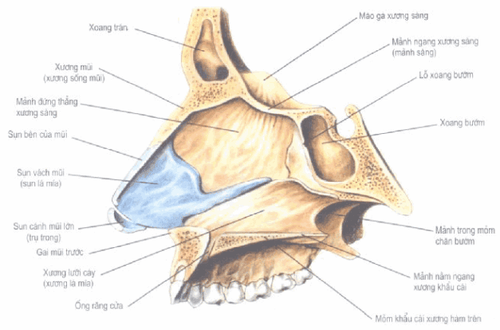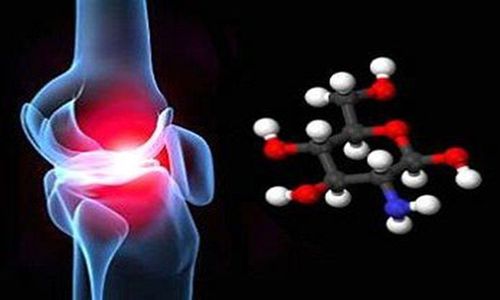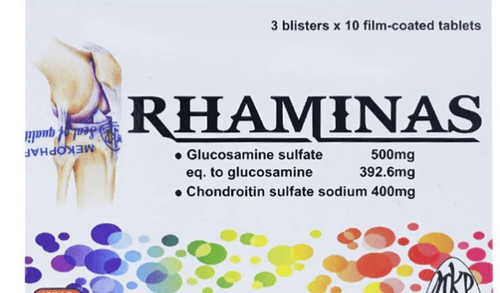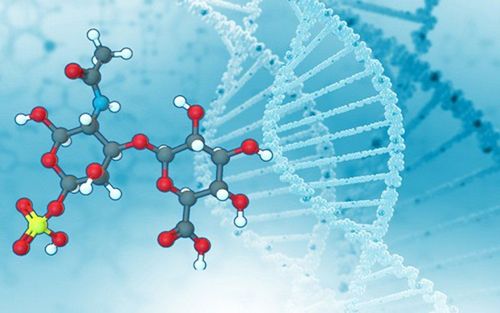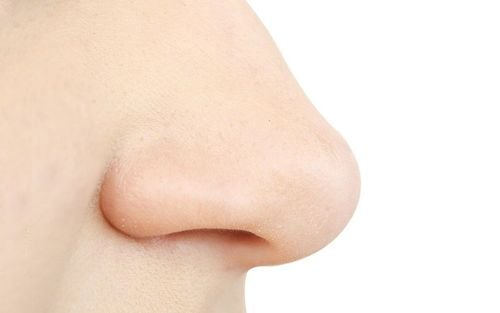This is an automatically translated article.
Most of us despise the smooth, painless movements we use every day to set a table, open a door, or go to the mailbox. Each of these daily activities involves many joints in the body. Normally, we don't feel the friction during these movements thanks to our articular cartilage. So where is cartilage? Knees, joints, ears, nose and ... Read more about this in the article below.
1. What is cartilage? What types of cartilage are there?
Cartilage tissue, or cartilage for short, is a flexible connective tissue that keeps the joints fluid moving by coating the surface of the bones in our joints and by cushioning the bones against impact. It is not as stiff as bone, but stiffer and less flexible than muscle tissue. Cartilage gives shape to several parts of the body and acts as a cushion between the bones in a joint.
Cartilage is composed of cells called chondrocytes that produce specialized proteins that stick together to form a cartilage-like, gel-like substrate. The proteins in the substrate include:
Collage Proteoglycans Non-Collage Protein Proteins in cartilage absorb water, giving cartilage its rubber-like consistency and ability to hold the shape of flexible body structures. Cartilage has no blood vessels, nerves or lymphatic ducts; instead, nutrients diffuse through the dense layer of connective tissue (perichondrium) that surrounds the cartilage.
What are the different types of cartilage?
Cartilage has different properties depending on their location in the body and their function. There are three main types of cartilage:
Hyalin cartilage (nasal cartilage): Also known as articular cartilage, hyaline cartilage forms a thick layer on the ends of bones in joints. It is the most common type in the body. Hyalin cartilage is also found in the ribs, the septum of the nose that separates the nostrils and breathing tubes (windpipe), the larynx, and the ribs.
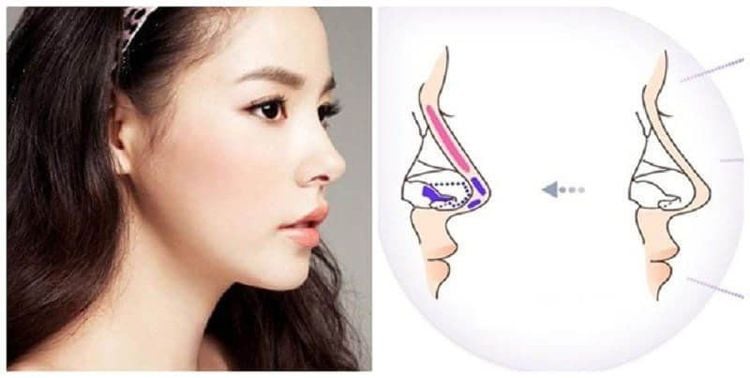
Mô sụn hyalin có thể tìm thấy trong vách ngăn của mũi
Elastic Cartilage (ear cartilage): Elastic cartilage is mainly made up of elastin protein fibers that make it more flexible, providing strength and elasticity to organs and body structures. Cartilage is found in the outer ear, part of the nose, and the larynx. Fibrous Cartilage (Knee Cartilage): Fibrous Cartilage is a tough, flexible, and elastic type of cartilage found in the joints of the knee (meniscal), hip (labrum), and shoulder (labrum), and in between the vertebrae (discs) in the spine. These discs are important for reducing friction in joints, such as the knees. Doctors consider this to be the strongest of the three types of cartilage. It has thick layers of strong collagen fibers.
2. What is the function of cartilage?
Cartilage serves different purposes depending on its type and location in the body. Cartilage gives shape to organs such as ear cartilage and nasal cartilage, keeping them stiff but flexible. Cartilage attaches the ribs to the sternum (breastbone) and gives flexibility to the ribcage to allow the ribcage to expand during breathing. Cartilage helps keep the trachea open and flexible.
Cartilage in weight-bearing joints such as vertebrae, knees and hips absorbs impact from movement and helps distribute body weight. Cartilage cushions all joints, allowing sliding motion and reducing friction between bones.
3. What causes cartilage damage?
Cartilage can be damaged by trauma or degeneration, worn down by:
Joint damage Degenerative age (osteoarthritis ) Excessive weight Overuse and/or overactivity Inflammation and infection
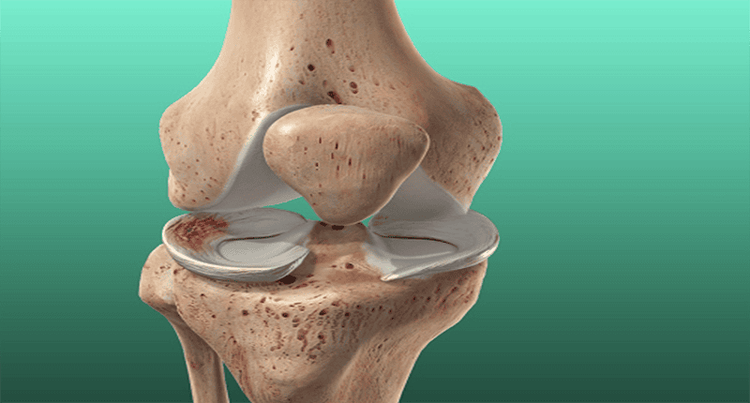
Sụn khớp có thể bị thoai hóa theo tuổi tác
Chondromalacia patellae This condition, also known as runner's knee, occurs when the articular cartilage above the kneecap breaks down. Factors such as injury, overactivity, poor alignment, or muscle weakness can all lead to this condition. Chondromalacia can cause bone to rub against bone, which is very painful.
Inflammation of the lacrimal sac This condition usually occurs when the cartilage connecting the ribs to the breastbone becomes inflamed. Although the condition is usually temporary, it can become chronic. This condition causes uncomfortable chest pain or tear duct leakage.
Erosive disc When the gel-like material inside a cartilaginous disc protrudes through the outer cartilage, it is called a herniated or slipped disc. This condition is usually due to degenerative changes that occur as a side effect of the aging process. In other cases, a person may have an accident or severe back injury that can cause a herniated disc. This condition causes severe pain in the back and often down the legs. Unfortunately, the breakdown of cartilage can be part of the body's natural degenerative process. Steps like maintaining a healthy weight, practicing flexibility and strength training exercises, and avoiding overtraining can help reduce the rate at which cartilage breaks down.
4. Can cartilage repair itself? How to treat damaged cartilage? How to keep cartilage healthy?
Damaged cartilage is incapable of healing itself or growing back because it has no blood supply. Chondrocytes called chondrocytes usually do not regenerate or repair themselves, meaning damaged or injured cartilage will not heal well without medical intervention. There are several types of treatments to restore damaged cartilage depending on the extent of the damage. Cartilage treatments include the following:
Non-surgical treatments:
Lifestyle changes such as losing weight, avoiding activities that may cause further damage, and performing appropriate exercises. Physical therapy and the use of assistive devices such as braces. Joint injection of hyaluronic acid, a component of synovial fluid, which is a natural lubricant in joints. It can improve joint lubrication and limit further damage to cartilage. Dietary supplements of compounds such as glucosamine and chondroitin are naturally present in the body. Supplements are said to help limit cartilage damage and reduce pain, but it's essential to check with your doctor before taking.
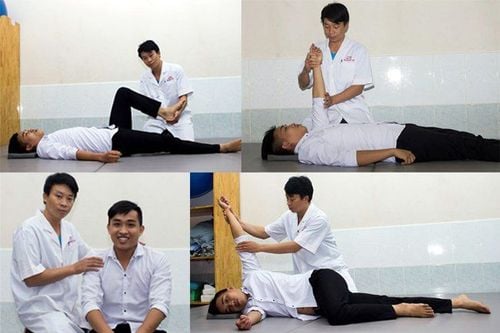
Vật lí trị liệu đúng cách sẽ giúp phục hồi mô sụn khi bị tổn thương
Abrasion of the joint This procedure involves using a special high-speed tool called a ledge to create small holes under the damaged cartilage to stimulate the repair process. repair and growth of cartilage.
Autologous chondrocyte transplant This cartilage-covered rhinoplasty requires two steps. First, a doctor takes a piece of healthy cartilage from a person and sends it to a lab. In the laboratory, the cells are "cultivated" and stimulated to grow. The person then undergoes surgery, where the damaged cartilage is removed and replaced with newly grown cartilage. A surgeon also made other repairs. Because this method requires multiple surgical procedures, doctors usually only perform it on younger people with injuries 2 centimeters or more.
Microfracture This surgical technique involves removing damaged cartilage and then making small holes just below the cartilage in an area of bone called the subchondral bone. This will create a new blood supply that ideally stimulates the healing process.
Drilling The drilling approach is similar to microcracking. It involves making small holes in the subchondral area to stimulate the healing process and grow new cartilage by increasing blood supply.
Automatic bone marrow transplantation This method involves taking a piece of healthy cartilage from a weight-bearing area of the body and applying it to the damaged area. This type is usually only used on a small area of damage because the surgeon cannot remove an excess of healthy tissue.
Allograft transplantation in bone marrow Unlike other methods of tissue transplantation, the transplant is taken from the donor, not the person himself. Allografts can often treat larger areas of damage than autografts. Although doctors can perform these procedures to promote healing, cartilage can grow at a slow rate. Doctors will likely recommend physical therapy and other techniques in the meantime to increase mobility.
How do you keep cartilage healthy? It may not be possible to prevent age-related cartilage degeneration, but cartilage health can be preserved to an excellent degree with proper care. Here are some measures that may include:

Nên tập thể dục thường xuyên để bảo vệ sụn khớp
Maintain a healthy weight Eat nutritious foods Avoid energy drinks and soft drinks, drink water instead Avoid smoking Move and exercise regularly Strengthen core and surrounding muscles Warm up first and stretching after exercise Incorporate exercise routines to avoid overworked joints Seek prompt treatment for injuries
Please dial HOTLINE for more information or register for an appointment HERE. Download MyVinmec app to make appointments faster and to manage your bookings easily.
Reference sources: healthline.com, medicinenet.com



